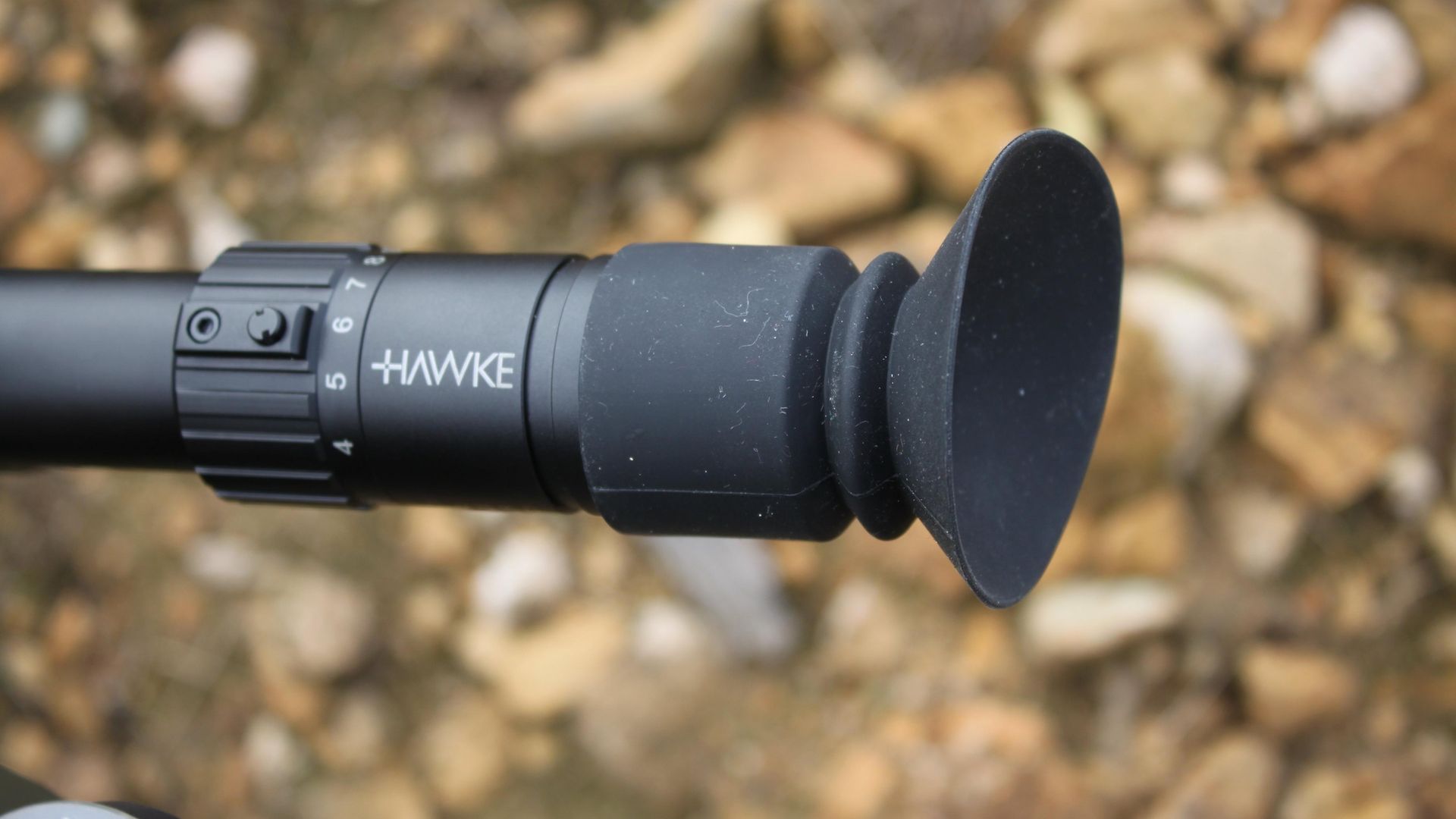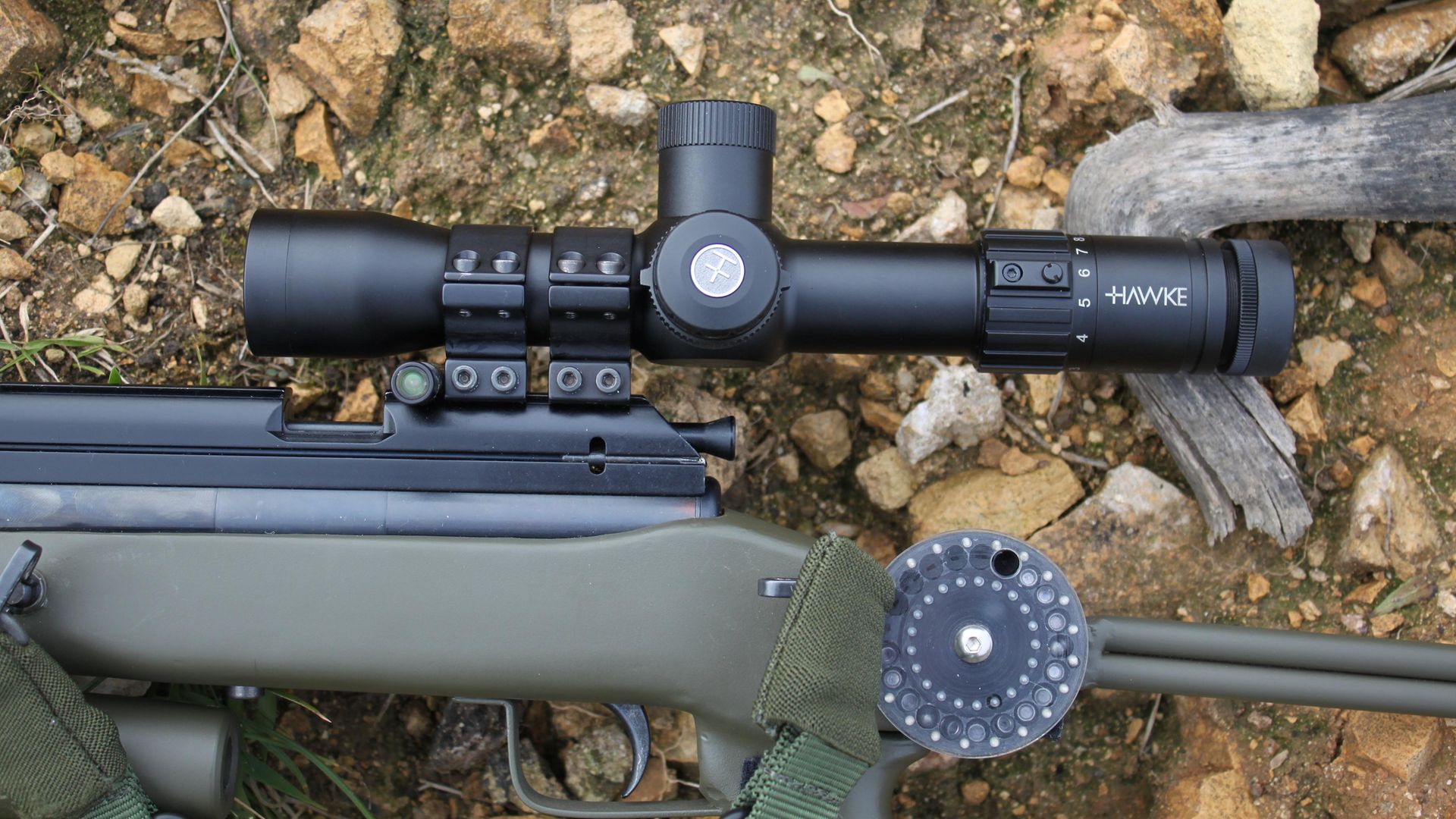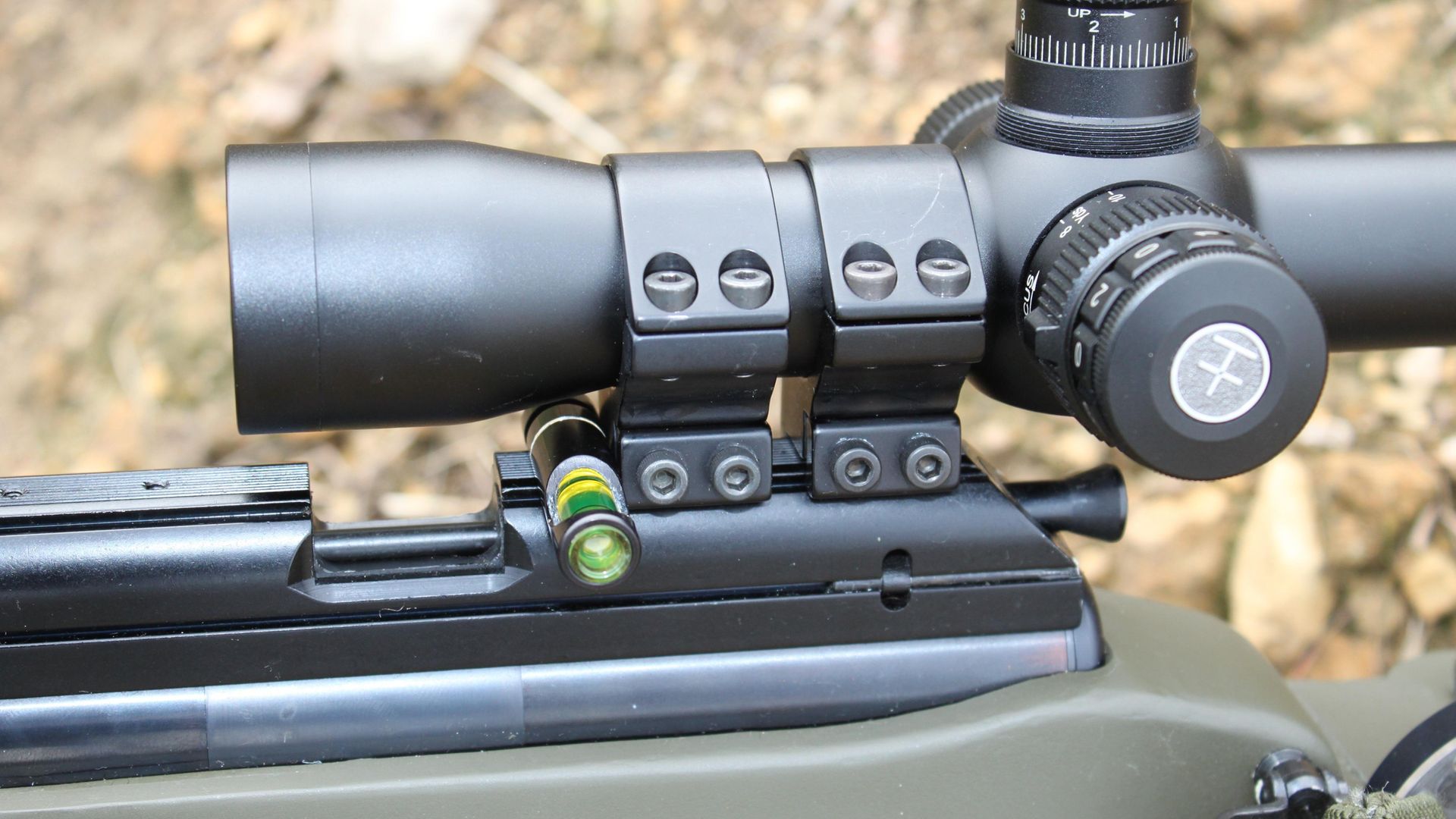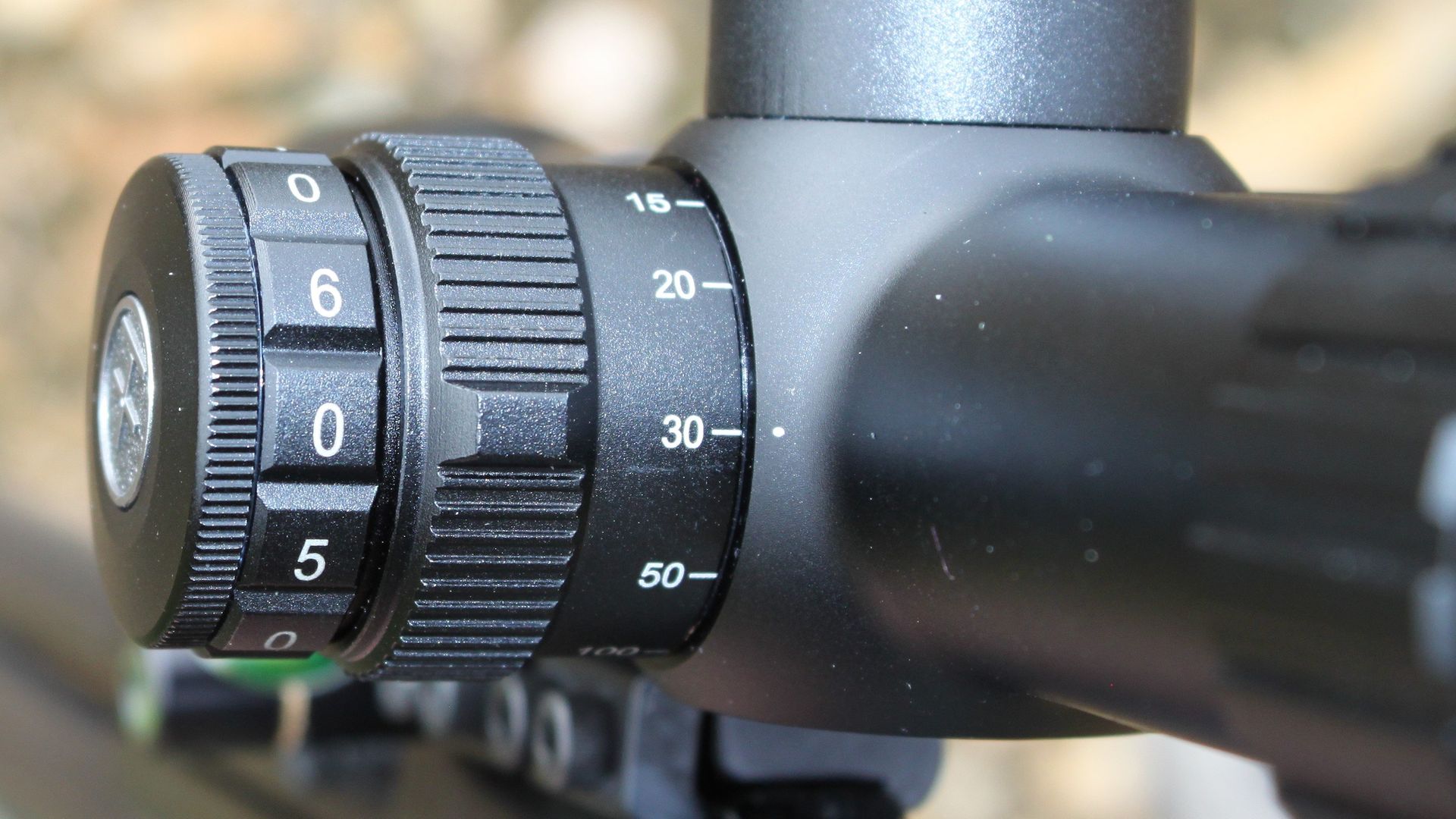Tim Finley discovers a new type of riflescope designed around minimal eye relief for non-recoiling airguns when he tests the Hawke Touch 3-12x32...
 credit: Archant
credit: Archant
A really different scope now from Hawke; traditional scopes have eye relief, which means that there is a distance from the eye to the back of the scope. This was always due to recoil of the firearms that telescopic sights were initially made for.
When scopes first began to be fitted to air rifles, the rifles were spring-powered and they recoiled, too, so the design and layout of the scopes stayed the same. It was only with the advent of recoilless pre-charged pneumatic air rifles that people began to look at telescopic sights differently. Did they really have to have eye-relief?
Well, no they didn’t, and bringing the scope back toward the eye has the advantage of increasing the field of view, so you can see more. Hawke’s take on these minimal eye relief scopes is called the Touch. Of course, it gets its name from the fact that the shooter’s head, namely the eyebrow, can rest on the back of the scope’s eye bell, and a rubber eyecup is provided to make this more comfortable.
 credit: Archant
credit: Archant
ROCK-SOLID BUILD
The Touch is a new departure for Hawke and I was really keen to see just what the difference was over a conventional layout. The Touch is a 3-12 x 32 scope, so the magnification range is pure hunting territory and on getting it out of the box, I could see that the Touch retains the rock-solid build of Hawke’s current Airmax range. It has target turrets under screw-off dust caps, and the AMX illuminated reticle, to boot. What did strike me was the small objective lens – it’s only a 32mm O/D and another feature of traditional scopes is to have a large objective lens, to give a greater field of view.
It looks even smaller because the parallax adjustment is achieved via a sidewheel on the left-hand side of the scope. The sidewheel shares the left-hand saddle position with the illumination for the reticle – the top and right-hand side saddle position are for the windage and elevation turrets, of course. The click values are a 1/10th of a milliradian, there is a 75 mil range of adjustment on each and both are protected by screw on/off dust caps.
 credit: Archant
credit: Archant
DIFFERENT FORMAT
I was super-keen to get the scope on a rifle and see just what this different scope design could do. I chose one of my favourite hunting rifles – a .177 BSA Ultra – to which I fitted a folding stock. It’s UK legal power, and still over 600mm in length with the shoulder stock folded back, and the Touch is not a massive scope, so I thought it would be perfect for my diminutive BSA.
As it sits much further back, the mounting of such zero eye relief scopes has to be tackled differently to normal scopes; rather than ‘reach forward’ mounts, it needs ‘reach backwards’ on most PCPs. On my Ultra, I used a two-piece mount, but positioned them both on the body section between the flare for the 32mm objective lens and the saddle.
 credit: Archant
credit: Archant
PCP ONLY
The body tube on the Touch is a single piece of 30mm diameter aluminium, so it is super-strong and I didn’t have any reservations for mounting the Touch in this way. The Ultra is a small rifle, as it was always designed to be, so the 11mm scope rail is not massive. Either way, being able to mount the scope on a rifle like the Ultra shows that it can be used on any PCP, even one customised with a folding stock like mine. I keep mentioning PCPs because I wouldn’t mount the Touch on a springer or a gas-ram recoiling air rifle. The objective bell ended up directly over the breech and loading channel of the Ultra, but I was still able to load the rifle easily, thanks to the small 32mm front lens.
 credit: Archant
credit: Archant
FIELD PERFORMANCE
When using the scope in the field, I was blown away by its performance. It is unlike any other scope I have ever used and I found I could use it with both eyes open – unheard of for me with a normal scope. I shoot red dots and my practical stuff with both eyes open, so it came really naturally to me – it’s absolutely brilliant! Those not used to shooting with both eyes open might benefit from using the rubber eye cup supplied with the Touch.
The Hawke AMX glass-etched reticle is just the icing on the cake. The multi-point illuminated reticle has everything a hunter needs, and more; set on 10x magnification, it gives true mil and half mil-dot aiming marks and the red-coloured reticle illumination has six brightness settings. The single CR2032 3-volt battery is housed in the left-hand side turret, and there is even a battery supplied to get you going.
Hawke has made the illumination much more user-friendly. Set between each brightness setting is a zero or ‘off’ setting, and once you find a setting to suit your conditions, a simple turn will take you there and you’ll be able to turn it off just as easily.
The magnification zoom ring has an indexed detent in its travel up and down the magnification range. When you reach the number 10 on the 3 to 12 magnification zoom ring, it lets out a ‘click’ noise, telling the shooter it’s set on 10 mag. I found that very useful when out shooting the Touch, and I used it a lot.
 credit: Archant
credit: Archant
VERDICT
Is it worth the over £300 price tag? It is a game-changer in the way you use the scope, and for hunters it could have an impact on how successful they are. So, yes – it is well worth the money. This is a really, really different optic and unlike anything I have used before. Do I like it? Yes, yes I do – very much.
SPECIFICATION
Manufacturer: Hawke
Model: Airmax 30 Touch
Code: 13 260
Magnification: 3 to 12
Objective Dia: 32mm
Body Tube: 30mm
Max Adj: 75 MRAD
Click value: 1/10th MRAD
Finish: Matte black
Field of view @100m: 21.3 – 6.1m @ 100 m
Focus: 9m (10yds)- infinity
Eye relief: 30mm
Exit pupil: 10.7 – 2.7mm
Overall length: 266mm
Weight: 572 grams
Features: See-through scope caps, rubber eye piece. Lens cloth, instructions and CR2032 3v battery
RRP: £349